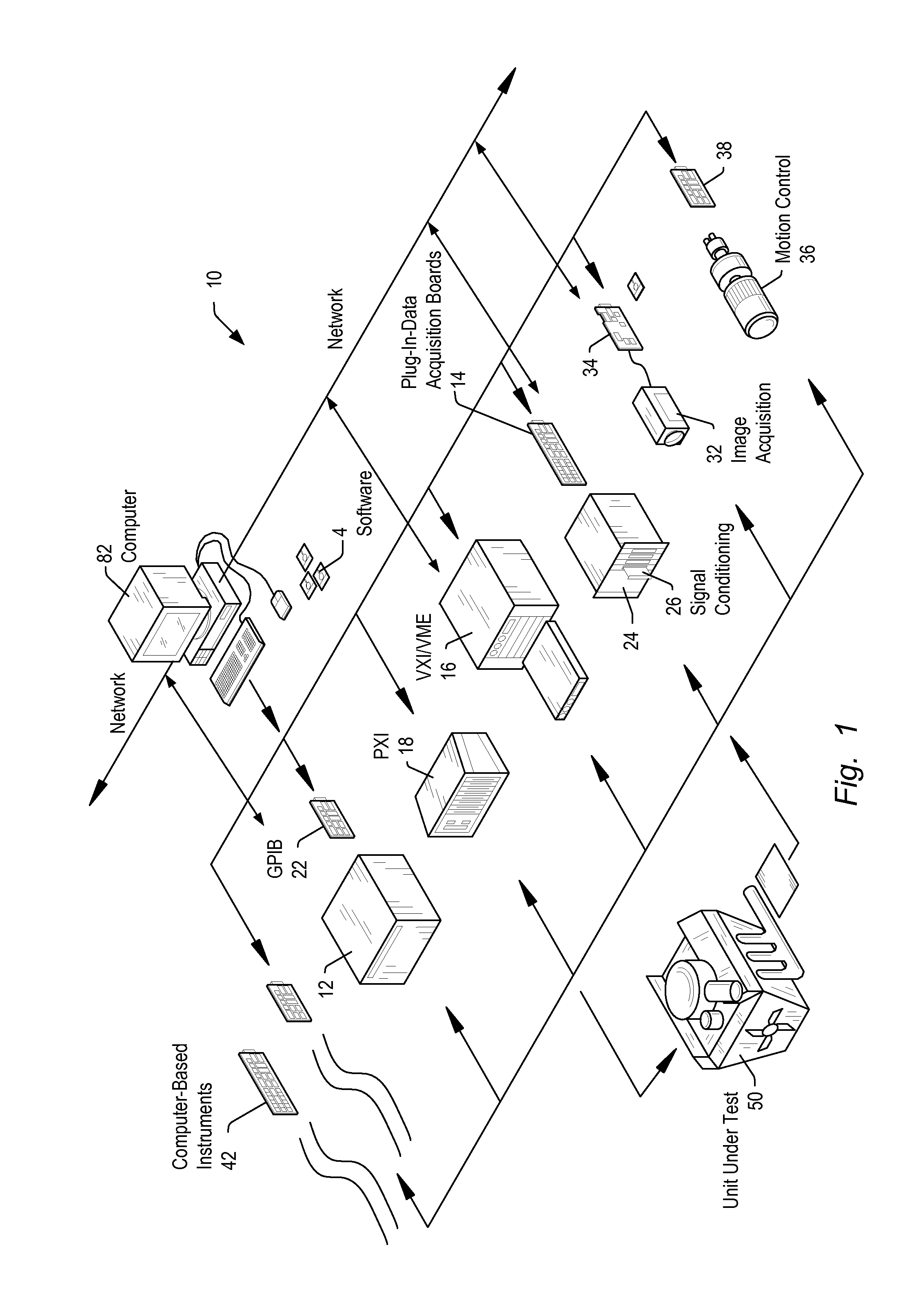Cross Controller Clock Synchronization
a cross-controller and clock synchronization technology, applied in multiplex communication, generating/distributing signals, instruments, etc., can solve problems such as compounding problems, easy to combine triggers, and inability to combine triggers at all, and achieve accurate control of data acquisition
- Summary
- Abstract
- Description
- Claims
- Application Information
AI Technical Summary
Benefits of technology
Problems solved by technology
Method used
Image
Examples
Embodiment Construction
[0023]In the following description, numerous specific details are set forth to provide a thorough understanding of various embodiments. However, one of ordinary skill in the art will recognize that these specific details are included for illustrative purposes to provide a better understanding of the overriding principles common to many different possible embodiments. Accordingly, other embodiments featuring details that may differ from the specific details provided herein may perform similar functions to achieve similar goals as the disclosed embodiments, and other embodiments may thus be derived from the specific details and embodiments disclosed herein. In some instances, well-known circuits, structures, and techniques have not been shown in detail to avoid obscuring the novelty of the overriding principles.
[0024]Embodiments of the present invention may be used in systems configured to perform test and / or measurement functions, to control and / or model instrumentation or industrial...
PUM
 Login to View More
Login to View More Abstract
Description
Claims
Application Information
 Login to View More
Login to View More - R&D
- Intellectual Property
- Life Sciences
- Materials
- Tech Scout
- Unparalleled Data Quality
- Higher Quality Content
- 60% Fewer Hallucinations
Browse by: Latest US Patents, China's latest patents, Technical Efficacy Thesaurus, Application Domain, Technology Topic, Popular Technical Reports.
© 2025 PatSnap. All rights reserved.Legal|Privacy policy|Modern Slavery Act Transparency Statement|Sitemap|About US| Contact US: help@patsnap.com



